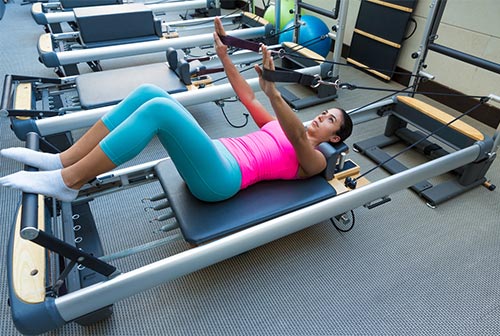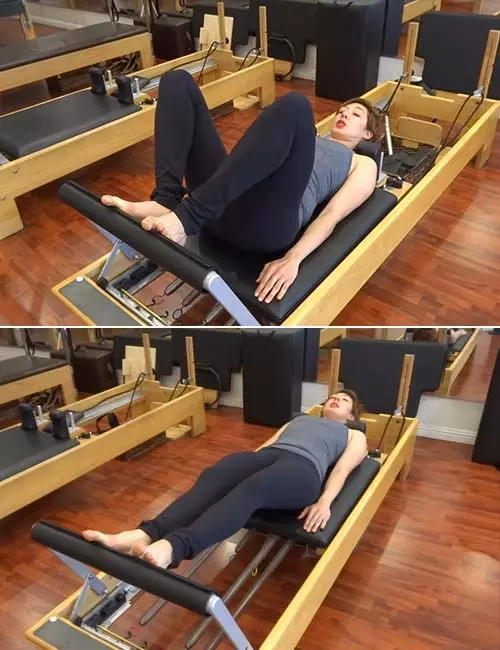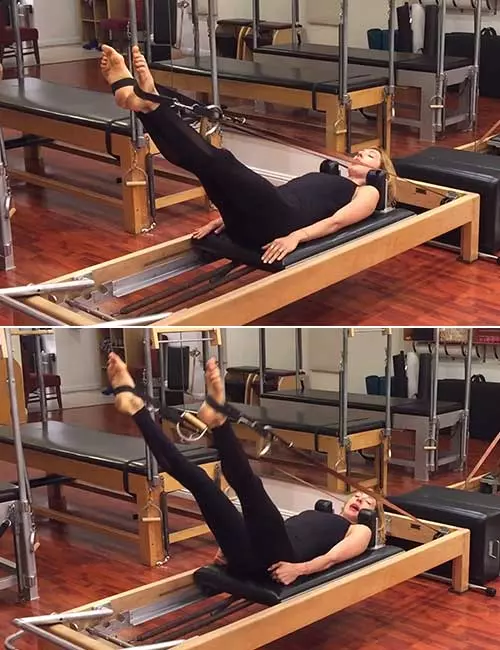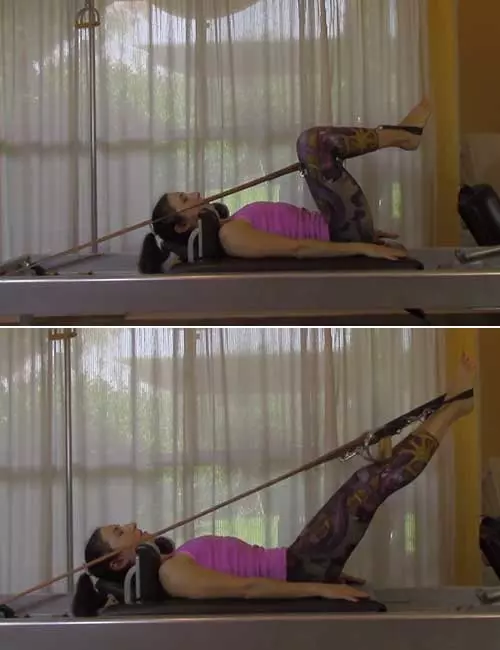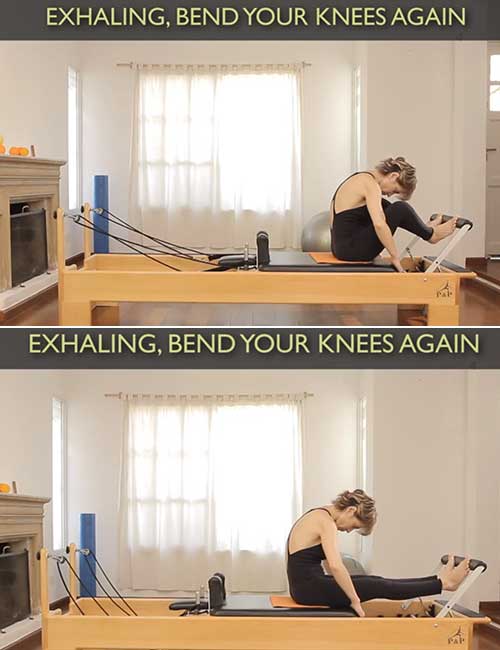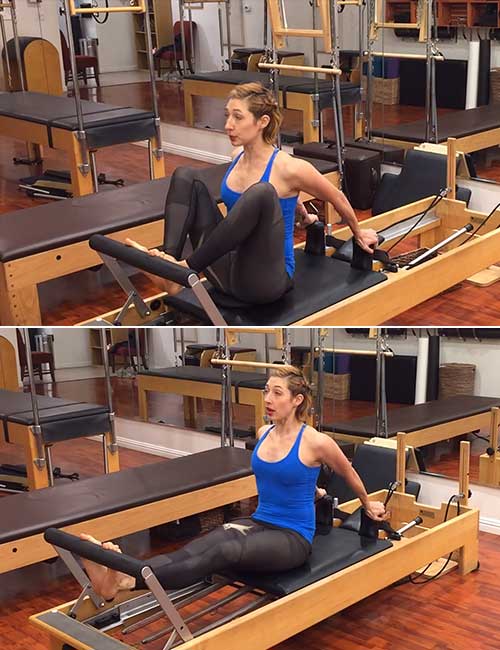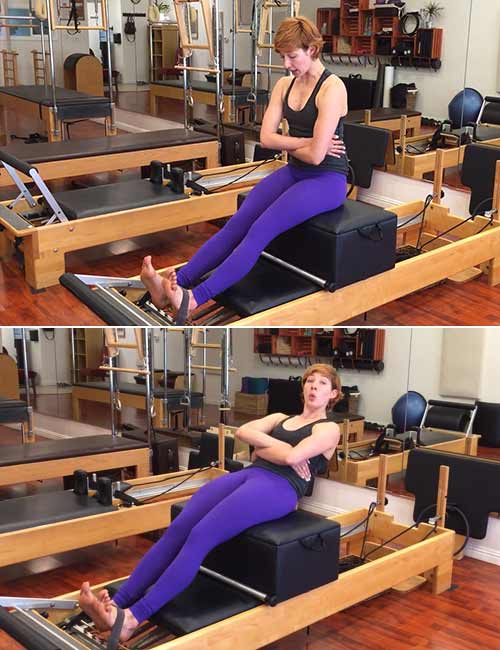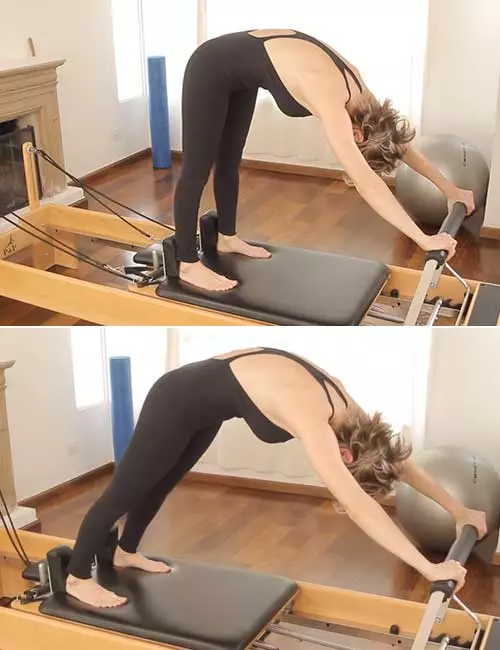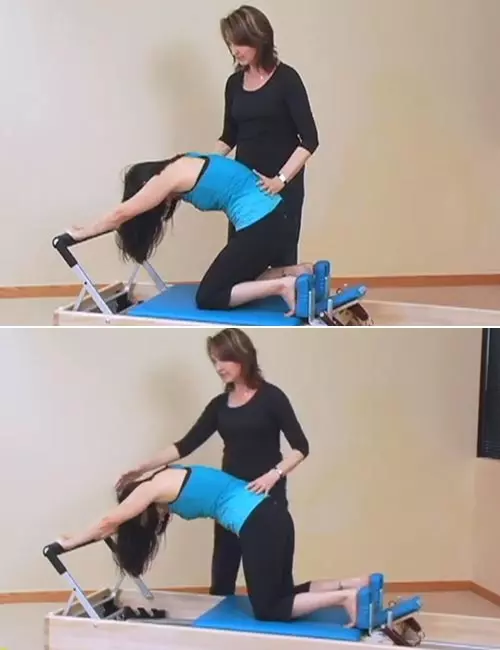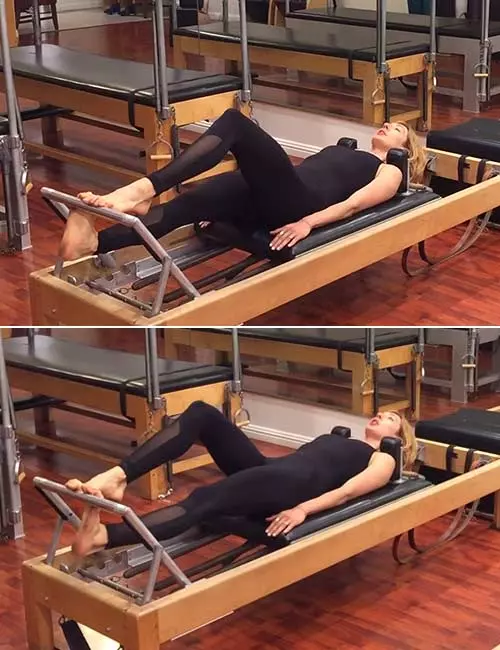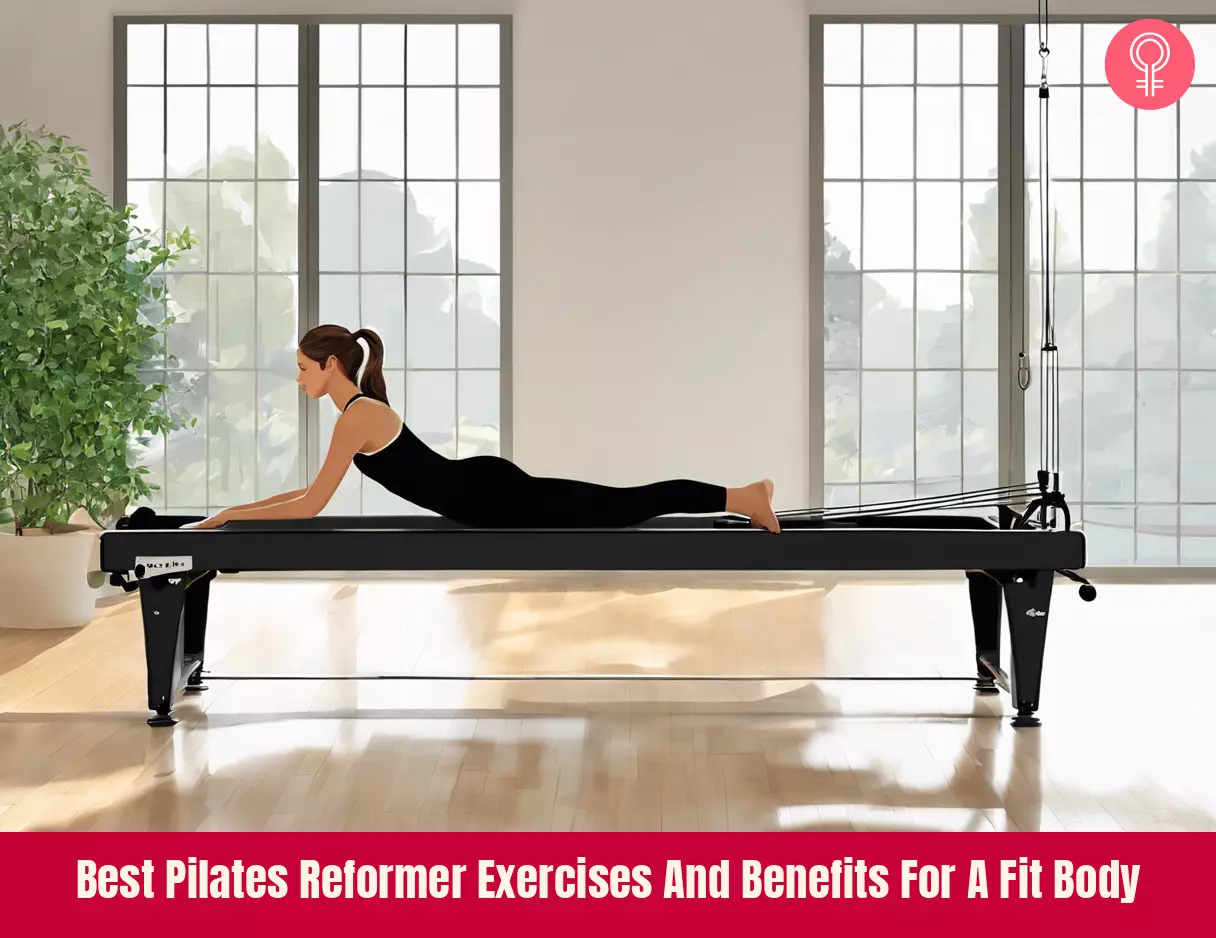Are you ready to experience your body changing for the better? Read on to know 10 of the best Pilates Reformer exercises and their benefits. Swipe up!
Pilates Reformer – What Is It And How To Use?
The Pilates Reformer was invented by Joseph Hubertus Pilates, a German physical trainer and founder of the Pilates Method. He invented Pilates Reformer machines by attaching springs to the bottom of hospital beds in order to rehabilitate injured war soldiers without impact. The Pilates Reformer has a flat platform that can slide back and forth, and exercises are done lying, sitting, kneeling, or standing on the platform. Attached below this platform are 4-5 springs that provide different levels of resistance. The Reformer bed has shoulder blocks that secure your head and neck, align your shoulders, and help open your chest. At the end of the platform spring is an adjustable bar called the footbar. The feet or hands can be placed on the footbar to move the carriage in and out in order to strengthen the legs and upper body. The rectangular shape of the Reformer forces your body to work symmetrically, correcting any muscle imbalances. You can do a variety of exercises on the Reformer. If you want the benefits of Pilates but are new to it, here are 10 Pilates Reformer body workouts for beginners. Take a look.
10 Pilates Reformer Exercises For Beginners
1. The Reformer Footwork
Inner and outer thighs, glutesi The largest and strongest muscular group in the body, also referred to as the hips or the butt. , quadsi A large four-part muscle in the front of the thigh that extends along the leg. , hamstringsi One of the three muscles in the back of the thigh located between the hip and the knee. , calves, and abs. 4 sets of 10 reps
2. Leg Circles On The Pilates Reformer
Abs, pelvis, inner and outer thighs, glutes, quads, and hamstrings 2 sets of 10 circles each way
3. The Frog On The Pilates Reformer
Inner and outer thighs, abs, hamstrings, pelvis, and back 3 sets of 12 reps
4. Stomach Massage – Rounded
Lower abs, pelvis, glutes, inner thighs, quads, and hamstrings. 3 sets of 10 reps
5. Stomach Massage – Arms Back
Lower abs, shoulders, back, chest, pelvis, glutes, adductors, quads, and hamstrings. 3 sets of 10 reps
6. Short Box – Round Back
Lower abdominals, spine 3 sets of 10 reps
7. Short Box – Flat Back
Abs, back, posture 2 sets of 10 reps
8. Elephant On Pilates Reformer
Abs, glutes, hamstrings, calves, and quads. 3 sets of 5 reps
9. Knee Stretch On Pilates Reformer
Knee strength, hamstrings, quads, calves, and abs. 3 sets of 8 reps
10. Running on the Pilates Reformer
Calves, hamstrings, quads, glutes, ankle strength 2 sets 20 reps These 10 Pilates reformer exercises work your entire body in a no-impact and effective way that focuses on core and glute strength, proper alignment, and strengthening and lengthening your spine. Scroll down to find some helpful tips that help improve your practice and ensure you start right. Tips For Beginners Here are some essential tips to help you get the most out of your Pilates practice:
Seek guidance from a certified instructor to ensure correct exercise execution. Prioritize proper form rather than rushing through the exercises. Increase the reformer resistance gradually as you build strength. Pay attention to your body’s signals and modify exercises as needed.
Pilates Reformer Exercise Benefits
Strengthens the core Promotes better posture Helps relieve joint pain Tones muscles Reduces risk of injury Increases flexibility Improves balance Boosts overall well-being Helps relieve stress
Common Mistakes To Avoid
Not breathing in and out – Make sure you exhale and inhale while doing the exercises (exhale on the effort to contract your abs). Breathing incorrectly can reduce oxygen flow and cause muscle soreness. This can reduce the effectiveness of the exercise. Moving too quickly – You must move slowly and with control and make sure you are engaging your muscles so that your Pilates session is most effective. Doing more reps is not what you should focus on. Do the exercises with precision. Do understand that rapid movements can compromise the effectiveness of your exercise routine. Hence, prioritize quality over quantity to achieve your fitness goals. Not focusing on the movements – Focus on the movement of every body part. This will help you engage the right muscles and help you benefit from Pilates sessions.
Now, the main question is, how many calories can you burn by doing Pilates reformer exercises? Scroll down to find out.
Calories Burned In Pilates Reformer Exercises
These exercises can boost your overall fitness and burn more calories when incorporated into a balanced workout regimen. You can burn anywhere between 250-450 calories in one session of Pilates reformer exercise. If you do it for 4 days a week, you will burn about 1000-1800 calories per week! However, the calories burned will also depend on your exercise levels, body weight, and time. There are mainly two types of pilates practices that you can perform to gain health benefits. Learn about them in the following section.
Reformer Pilates vs. Mat-Based Pilates – What’s The Difference?
The main difference between mat pilates and reformer pilates is the level of resistance. There is no external resistance in case of mat pilates. It does not require the use of any equipment other than your comfy mat. Whereas, in reformer pilates, you have to use elastic straps or machines to build resistance. It focuses on movement on elevated surfaces. Mat-based pilates is ideal for elders or those who just want to start out slowly, and it is easy to do. On the other hand, reformer pilates offers more support and helps you maintain posture but may be more difficult to do for some. How many times a week should you do Pilates reformer? Practicing 2-3 times a week should be good to start with and maintain good results. What should I eat before Pilates reformer? Snacks like nuts, berries, almond butter, boiled egg, celery with hummus, greens smoothie, cheese, and protein bars can all help you fuel up before a pilates reformer session. Is it better to do Pilates in the morning or at night? Morning is a better time as there are fewer distractions, and your body is well-rested. Is 20 minutes of Pilates a day enough? Yes, for most people, 20 minutes per session and 2-3 sessions per week are good enough to see visible results.
Illustration: Best Pilates Reformer Exercises And Benefits For A Fit Body
Start your Pilates journey with an effective 20-minute full-body workout for beginners. Watch this video to learn the basics of Pilates and enjoy a satisfying session from the comfort of your own home.
